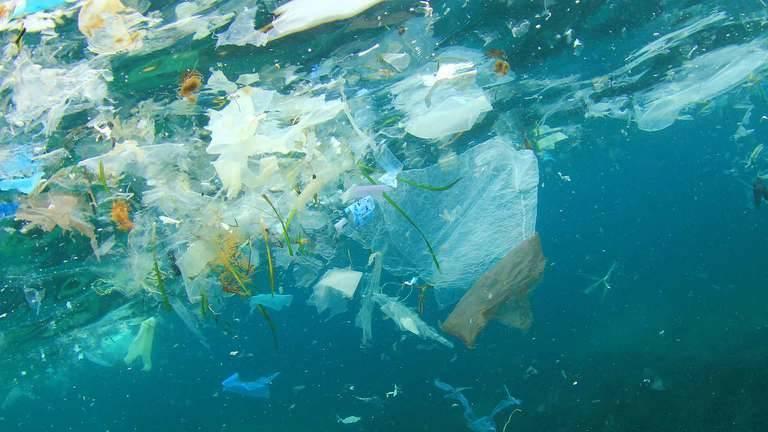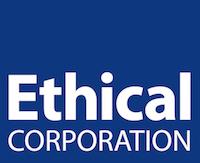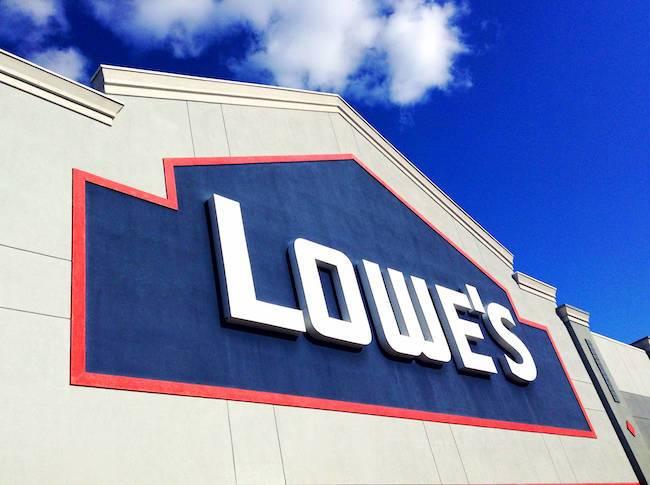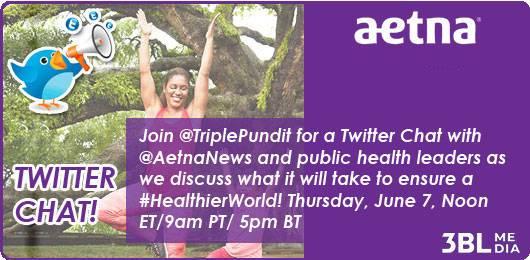6 Steps for Building a “Sweet Spot” Where Social and Financial Equity Meet


Equity means quite different things to two stakeholders I work with the most:
- Investors who deal in debt and equity and seek to benefit from the risk and opportunity that climate change creates.
- Urban planners and nonprofits dealing in social equity and cohesion and eager to prevent harm based on risk and opportunity created by climate change.
Will these two paths converge in the wood, as Robert Frost put it? Or, is it never the twain shall meet as Kipling expressed it?
According to the United Nations-supported Principles for Responsible Investment, $70 trillion (U.S.) of assets under management integrate environmental, social and governance (ESG) factors into core operations. But, peeling back that good news, would we see more social equity ensuing? By and large, the positive and negative implications on communities of climate change aren’t being addressed.
I frequently note that climate change exacerbates the tale of two very different futures – rich getting richer from extraordinary resources for resilience and poor getting poorer due to precarious resilience in everyday circumstances. What would it take for those two futures to cause investors to integrate social equity into their climate strategies, creating what I call Finance “Adaptation Equity?”
First, though, they would have to grasp – and care about – social equity issues. Those investors already trying to achieve sustainability goals are likely to see social equity as material to financial equity because it:
- Accomplishes two ESG pillars – Environment and Social – that link the mitigation of physical risks of climate change with the enhancement of communities. Think of aligning with international standards related to human rights or the 17 U.N. Sustainable Development Goals.
- Unveils new investment opportunities in physical assets that can enhance community equity such as infrastructure and real estate.
- Responds to an admittedly small group of impact investors who focus on beneficiaries and aim for responsible investment to be defined by social equity.
- Portends new pathways for longer-term investors (e.g., pensions) and development funders (e.g., blended finance teams) to apply their assets to climate and inequity affected sectors and regions.
- Enhances understanding of systemic risks within the financial ecosystem by connecting climate change and inequity, especially given that without concerted effort, climate change will make inequity worse – and inequity has been proven to impact markets.
Still, for finance equity to flow to social equity requires work. Here are three strategies for each.
Investment equity
- Include social equity principles in investment policy statements and goals as well as in requirements for consultants and advisors. Ask, “Will this asset improve the lives and livelihoods of lower resourced communities?”
- Make social equity a part of risk mitigation assessments for climate-exposed assets, broadening the scope of the Task Force on Climate-Related Financial Disclosure guidelines to ensure that social elements are privileged.
- Insist social equity be part of green bond project frameworks, asking if the infrastructure asset will have an equal or greater number of lower-resourced beneficiaries.
- Include means to raise fees and taxes related within social equity projects to make them more attractive to financiers. Ask, “How can we make this project a revenue generator?”
- Make calculations that show the market benefits of social equity in your geographies and communicate them to public and private stakeholders.
- Insist that social equity be part of financial assessments for infrastructure and other projects by being present at negotiations and integrated design discussions.
As efforts create successes, failures and draws, both groups should communicate action on social and investment equity with their clients and beneficiaries to help build this field of practice.
How to Combat the Environmental Threat of Ocean Plastics


By 2050 there will be more plastic than fish in the world’s oceans.*
This sobering statistic was announced at the World Economic Forum in 2016 via a report by the Ellen MacArthur Foundation, and became the impetus for spirits distributer Bacardi’s partnership with Lonely Whale on the original #NoStraws initiative — and many others — the same year.
It is also the reason that, in the last couple of months, we have seen three of the largest environmental awareness day campaigns — Earth Day (April 22), World Environment Day (June 5) and World Oceans Day (June 8) — all working with the same theme: Ocean Plastics.
The Earth Day Network tagline was, “Earth Day is Every Day; End Plastic Pollution,” and the organization offered three ways to pledge to reduce the amount of plastics ending up in our oceans. Participants were armed with a “Plastic Pollution Primer and Action Toolbelt”, a “Footprint Calculator and Planner”, and taken through the process of setting up events and activities commemorating the day.
On World Environment Day, in addition to launching the first-ever global plastics report, the UN Environment Programme (UNEP) initiated a full-on game of Celebrity Social Media “Tag” to spread the word about what individuals and companies can do to reduce single-use plastics, under the hashtag #BeatPlasticPollution. With help from NYC film company Footage Films, videos were created to show how each celebrity would make the (visible) switch from single-use plastics.
Among the participating celebrities are William Shatner, Adrian Grenier, James Cromwell, Lana Parrilla, Jeri Ryan, and Draco Malfoy himself, Tom Felton -- whose promise video was retweeted by J.K. Rowling to her 14.4M followers. Participants tagged each other, family, friends, and corporations. They then pledged to do away with such items as plastic straws, plastic forks, single-use plastic water bottles, single-use coffee cups with plastic tops, and plastic shopping bags.
Companies tagged in this initiative include Dell, McDonalds, Whole Foods, Starbucks, IBM, and Tampax. Many companies already have initiatives in place, like Dell, with their participation in the NextWave consortium of companies that is “the first cross-industry, commercial-scale global ocean bound plastics supply chain” looking to keep plastics out of our oceans.
For World Oceans Day, events and initiatives are planned around the globe: from the challenge for individuals to pick up one piece of plastic litter (which would ultimately end up in an ocean) per day; to beach cleanups; to viewings of the 2016 feature-length documentary film “A Plastic Ocean”; and beyond.
It is clear that this is one environmental issue for which every one of us can effect needed change by taking the threat seriously and amending our single-use plastic lifestyles for the good of all.
*Note from the author: The ramifications of all of this plastic in the ocean should be obvious, but here is a great article to remind readers of the impending ruination of our oceans.
Photo: Ocean Conservancy
California Proposes New Laws to Reduce GHG Emissions


By Kirsten James
California’s economy is booming - it’s now the 5th largest in the world – even as the state implements rigorous climate statutes that cover nearly every sector. In its aim to reduce greenhouse gas emissions by 40 percent below 1990 levels by 2030, California put in place a cap and trade system, a Renewables Portfolio Standard for electricity, progressive advances on clean cars, the low carbon fuel standard, energy efficiency programs and incentives to farmers to capture or reduce methane emissions, and more.
But there is one source of GHG emissions that’s been missing from this list: what to do with GHGs from the natural gas-powered heating and water heating systems in California’s 13 million homes and commercial buildings.
Last week, the California Senate and Assembly each voted to move forward a set of bills to address “building decarbonization,” signaling the California legislature is taking this component of the climate puzzle seriously. The legislature has until September to pass them out of their second house.
If adopted, these bills would close an important gap in California’s efforts to clean up the air and reduce emissions. Furnaces and water heaters that run on natural gas and propane account for 40 percent of emissions from buildings. And buildings, in turn, produce a quarter of California’s emissions.
Like many of California’s climate laws, Senate Bill 1477 and Assembly Bill 3232 are market-oriented policy approaches designed to spur innovation. SB 1477 would require the California Energy Commission to develop incentives for the private sector to innovate new water and space heating equipment that produce lower or no emissions and design lower-GHG emitting buildings, with such things as smart energy management systems or energy storage technology. It would set up a Low-Emissions Technology program to issue those incentives, using a portion of money raised from carbon allowances purchased by electrical and natural gas companies.
A companion bill, AB 3232, “zero emissions buildings and sources of heat energy” would direct the state Energy Commission to study the feasibility of reducing GHG emission from the state’s residential and commercial building stock by 40 percent below 1990 levels by 2030 – potentially setting its emissions reductions in line with the state’s overall emissions reduction goal. It would also require the commission to regularly report on GHG emissions produced from supplying energy to the state’s residential and commercial buildings.
The bills had garnered support from a broad coalition of environmental groups, cities and a host of businesses. Seven major corporations in Ceres network of Business for Innovative Climate and Energy Policy (BICEP) wrote letters to the legislature urging passage of these bills.
SB 1477 and AB 3232 bank on an approach that has worked in California climate policy before: encouraging market innovation. That is one reason companies doing business in California support this bill.
Both California’s emissions cap and trade program and its clean vehicles program set up conditions and incentives to encourage private sector investment in developing technologies to answer the problem. Incentives also exist for renewable energy use and deployment.
In that way, the state policies help create “demand” for these technologies – even before the technologies are developed. Then innovators get to work on solutions because they know there will be a market of buyers. It has worked well so far. Market based policy incentives for renewable energy, clean cars and reducing smokestack emissions are attributed with helping draw $56.9 billion in clean tech investment to this state in 2017 alone and similar amounts in several previous years.
These bills make use of the fact that the California Energy Commission already updates the state’s energy efficiency building codes for new and retrofitted buildings every three years. It expands their efforts, asking them to assess the potential for reducing buildings’ emissions from natural gas and propane, both in new and existing buildings.
With climate change continuing to show its wrath and businesses and individuals favoring policies to stem global warming, California upped its ambition two years ago on cutting greenhouse gases: setting a target of 40 percent reduction from 1990 levels by 2030 and aiming for an 80 percent reduction by the turn of the century, or 2050. Getting there - and preventing catastrophic levels of climate change for the next generation - will require addressing all sources. Passage of the building decarbonization bills will be key piece in meeting this important goal.
Kirsten James is Director, California Policy, for Ceres.
Photo: Wiki Commons
Microsoft Tests Underwater Datacenter for Energy Efficiency


By John Howell
With the blizzard of negative news about tech companies hogging the headlines recently, sometimes it’s been easy to forget how radical innovations in breakthrough technology are still being introduced by the tech giants.
Microsoft has launched Project Natick, an experiment with potentially large implications, by sinking a datacenter in the sea off the Scottish island of Orkney. Why this remote area? Orkney, at the northern tip of Great Britain, is a major center for renewable energy research. Companies such as the European Marine Energy Centre (EMEC), have been developing technology for tidal and wave energy for more than a decade.
The European Marine Energy Centre is a test site for experimental tidal turbines and wave energy converters that generate electricity from the movement of seawater. Tidal currents in the Orkneys travel up to nine miles per hour at peak intensity; the sea surface regularly roils with 10-foot waves that whip up to more than 60 feet in stormy conditions, says Microsoft.
The Orkney Islands have also been the site of the earliest UK wind energy efforts. Renewable energy generates 100% of the electricity production for the islands’ 10,000 residents.
The datacenter is a white cylinder containing computers and cooling systems. An undersea cable brings power to it and returns data to the Scottish shore, and then on to the wider internet, reports the BBC. The cylinder rests 117 feet under the surface, on a rock slab on the sea’s floor.
The main driver behind the project is the theory that the cost of cooling computers could be dramatically reduced by placing them beneath the frigid ocean waters off northern Scotland. Today, the world’s super servers are stored in giant warehouses that require massive amounts of energy to provide the air conditioning and humidity control they need to work properly.
The effect on the undersea environment is projected to be minimal. Microsoft Microsoft's Ben Cutler told the BBC that "the water just meters downstream would get a few thousandths of a degree warmer at most."
Project Natick contains just twelve racks of 864 servers, but if the experiment pans out, look for a shift toward moving millions of the Internet’s servers into undersea stations. Such a move would result in enormous reductions in energy use, which in turn could have a collateral benefit in mitigating climate change.
Photo: Microsoft
Sustainability Winners Unwrapped


The 9th Annual Ethical Corporation Responsible Business Awards are back and with the submission deadline set for the 22nd June 2018 time is ticking to enter your submission!
Understanding what it takes to create and drive an innovative strategy can be a challenging task, so to help your submission along, we’ve drawn together a report detailing last year’s winners to demonstrate the projects that win through.
Download your copy of the winners report now
The report contains:
- A detailed breakdown of each category with the overall judges’ summary to help you understand what our expert panel look for in a winning submission.
- Key analysis of both the winning and shortlisted entries for each award to demonstrate the calibre of projects and their key attributes that saw them stand out.
Download your copy of the winners report now
Media Contact:
Ed Long
Project Director
Ethical Corporation
+44 (0) 207 375 7188
Just Give Me the Gist, But Not Too Short


By Shannon Houde
You’re at a leading industry conference getting a free-trade banana from the display of otherwise fattening snacks, and looking around to catch eyes with someone and “network”. Ahhhh! All of a sudden you see your dream boss, your top influencer. You brave it, walk over, introduce yourself and they are engaged. They ask you simply,
“So, what do you DO?”
Your heart rate goes up, you start to fidgit, and then…freeze. It seems like such a simple question (like the dreaded interview question, “walk me through your resume”. I mean who, more than you, knows as much as you do about yourself?
But really, are you ready for this? You don’t have a choice but to get ready. The new secret jobs market insists that you take the time to craft your memorable, original intro now – to save yourself later.
Not looking for a new job? That’s ok as this quick (think 30-seconds) pitch could help you win contracts, funding, or support for your impact-driven mission. It’s not used just to help you schmooze for a job, and, like LinkedIn, it isn’t only for job seekers, but rather, to help you build your personal brand and “make new friends” in your industry.
The trap many fall into is making their answer too short with just a title and company name when asked “what do you do?” That is boring! You have to bring it to life, tell a story, and take the whole 30 seconds. Don’t sell yourself short by keeping it too short.
Creating an elevator pitch is a 6-step process:
- Identify your goal What is your objective? Are you telling potential contacts what you do? Telling potential employers what you want to do next? Are you talking to grandma or a hologram?
- Explain what you do Be clear about the problem you are solving and use simple language, not in-depth technical details, so that anyone would understand it.
- Communicate your Unique Selling Point Make your story come to life so that your listener wants to hear more. Make your enthusiasm contagious. Your brand is all about the story you can tell to illustrate who you are and what impact you have. Paint a picture. All effective sustainability programs communicate their "story" through real people and real projects.
- Engage with a question To make it a two-way conversation that makes for good networking, end with a question, such as, "Tell me about yourself."
- Put it all together Merge the 4 sentences you’ve written. Don't worry about making it sound good, you can do that later. Be silly, serious, funny, reserved -- it doesn't matter. Let yourself shine through authentically.
- Practice Take some time to reflect on your writing and do a verbal recording. Circle the words and sentences that work. Look for the ones that hook you with a clear and confident story. Avoid connector words when possible. And don't forget to smile!
We are here to help you break this process down, be your sounding board during practice, and to give you networking advice. Also, a favorite book of mine to help you do this is Daniel Priestley’s “Key Person of Influence”. A quick airport read that is worth its (small) weight in gold.
Shannon Houde is an ICF certified executive and career coach who founded, Walk of Life Consulting, the first international professional development advisory business focused solely on the social impact, environmental and sustainable business fields.
Photo credit Rawpixel via Unsplash
U.S. Requests OPEC to Boost Oil Output


By Scott Huntington
Gas prices are on the rise. In fact, since crude dropped to decade lows in the summer of 2016 — following decade highs in 2014 — prices have steadily risen across America. Experts have credited this price rise to international oil exporters, and the Organization of the Petroleum Exporting Countries (OPEC) in particular.
Since the low prices of 2016, the countries within OPEC have agreed to cap global oil output in an attempt to drive prices higher internationally and dry out the flooded market. The cap on production has resulted in a steady rise in prices, landing us at a present three-year high that has many worried about the future of gas prices. In an official request to OPEC, the White House requested that OPEC release more of its oil product into the market in hopes it will help lower international and domestic prices.
The Politics
President Trump is no stranger to jostling with OPEC. The organization has occasionally furnished the target for the president’s late-night and early-morning tweetstorms, along with claims of shipping vessels loaded with crude oil and warehouses brimming with the black gold, all held on reserve to artificially boost prices. The president himself has promised to help lower the price at the pump, and the request comes less than a month after the president last tweeted on the subject.
The request — that OPEC releases an additional 1 million barrels of crude oil a day — was brought up in a meeting by several prominent OPEC representatives over the weekend. The benefits of this move — potentially more international oil sales — are balanced against the obvious benefits of a higher price. A noncommittal statement was released following the meeting, pledging “stable oil supplies [will be] made available in a timely manner to meet growing demand and offset declines in some parts of the world."
However, international prices might be headed even higher, given the economic sanctions recently imposed on Iran’s oil exports. The sanctions — which coincidentally displaced about 1 million barrels of oil a day — may have some correspondence with the request for further market saturation. These sanctions, coming on the heels of an annihilated Venezuelan economy, paint a bleak picture for the future of oil prices. The economic collapse of Venezuela, one of the primary North American oil tycoons, helped drive prices higher than expected by the OPEC nations.
Domestic Oil Production
Some have predicted that the future of American oil consumption may be in domestic production, particularly in oil-rich areas of Appalachia. West Virginia, in particular, has seen a recent rejuvenation in its oil production. Injecting money and jobs into this industry may help some of America’s most impoverished regions, but some fear American consumption is far too high to be sated by an increase in domestic production.
Further, American oil production has traditionally struggled to compete with international prices. In some senses, the hiking of global oil prices in recent years has been massively beneficial for American oil enterprises, allowing for a more competitive international position.
Oil Prices
This move represents an unprecedented move by the Trump Administration — or any recent administration — in directly reaching out to OPEC with specific requests. Past administrations have asked OPEC to release more reserves and drive prices lower, but have never specified the amount desired. In this case, the amount directly corresponds with estimates of how much oil will be withheld by new Iranian sanctions.
However, assuming oil prices continue on their current trend, the increasing unaffordability of foreign oil could send ripples through the international economic web. For some American oil ventures, the continued price drive by foreign competitors spells opportunity. Others interested in alternate energy sources see the rising prices as a chance to reach the American public.
Hershey Closing in on 2020 Sustainable Cocoa Pledge Despite Challenges in West Africa


It’s been a while since we have snacked on new corporate responsibility initiatives from Hershey.
The 120-year-old maker of Reese’s peanut butter cups and Hershey’s Kisses vowed earlier this decade to make its confections with only certified sustainable cocoa by 2020.
At that time, Hershey also set bold diversity and inclusion goals, among other environmental, responsible sourcing, social and governance targets.
With just two years until Hershey’s self-imposed deadline, we asked the company’s senior director of Sustainability, CSR, and Social Innovation, Jeff King, for an update during the Sustainable Brands conference in Vancouver.
“It’s always a challenge when you’re working on cocoa in West Africa,” said King, referencing the challenges in sourcing cocoa without contributing to tropical forest loss, among other complex social and environmental concerns.
Our video interview with King references a pilot project with USAID and Winrock International aimed at tackling land rights issues while educating farmers on sustainable farming methods in Ghana, the world’s second largest producer of cocoa.
Hershey has confirmed 75 percent of cocoa in its supply chain was certified sustainable in 2017 and, in the area of corporate governance, half of its executive committee are women.
A good starting point to review Hershey’s corporate responsibility journey is this 3BL Media profile. The company’s 2017 progress report, dubbed “This is Shared Goodness,” was released this week.
Image credit: Hershey
Lowe's Sends A Strong Message On Hazardous Chemicals In Retail Products


A pattern is beginning to emerge among US companies with strong corporate social responsibility profiles: when government fails to lead, they are in a position to become agents for positive change. This is no window dressing. The results can reach into issues of deep concern, even where public consensus is absent. One good example is climate action. Another is gun safety. The home improvement retailer Lowe's recently spotlighted a somewhat less controversial but still significant area, reducing the use of hazardous chemicals in retail products.
US retailers are beginning to provide consumers with non-toxic alternatives to common household products that contain hazardous chemicals. Lowe's has stepped it up to the next level, by announcing the phase-out of certain products containing methylene chloride and NMP.
What EPA said about methylene chloride and NMP
Last year the U.S. Environmental Protection Agency made a key move toward the banning of methylene chloride, a common ingredient in paint strippers as well as adhesives, aerosols, and many other products.
EPA previously found that paint strippers pose "some of the highest exposures" to methylene chloride, with risks to workers, consumers, bystanders and residents in homes where methylene chloride is used:
Effects of short-term (acute) exposures to workers and consumers, including bystanders, can result in harm to the central nervous system, or neurotoxicity. Effects of longer periods of exposure (chronic) for workers includes liver toxicity, liver cancer, and lung cancer.
As a result of these finding, on January 12, 2017 -- barely more than a week before President Obama left office -- EPA proposed a new rule banning methylene chloride in paint and coating removal consumer products. The ban would also apply to the majority of commercial paint and coating removal products, with furniture being among the allowed uses.
As for NMP, that's shorthand for N-Methylpyrrolidone (NMP), another common hazardous chemical. NMP is a solvent many industrial applications. It is also sued in consumer paint strippers and in auto care, home cleaning and hobby products.
In 2015, EPA identified risks to people with high exposure, especially "pregnant women and women of childbearing age." The agency noted that risks related to the hazardous chemical can be reduced through the use of protective equipment. However, that risk reduction only applies to short term users:
...gloves and respirators do not adequately reduce risks to people who use NMP for more than four hours per day on a single day or repeatedly over a succession of days.
On January 19, 2017 -- a matter of hours before President Trump was sworn into office -- EPA proposed two pathways for regulating NMP. One would ban its use in paint removers and require notifications when used in other products. The other pathway would focus on reducing risks to workers and consumers.
EPA also allowed for a national security exemption for NMP, which would also apply to methylene chloride.
What Lowe's did about hazardous chemicals
The public comment period for both proposals closed more than a year ago. By last December, reports circulated that EPA was shelving the proposals.
It seems that Lowe's is not waiting around for EPA -- or anyone else -- to take action on hazardous chemicals in paint removers. Last month the company released its 2017 sustainability report, which includes this item:
We have also committed to remove methylene chloride and NMP from all paint remover products, unless it is responsibly regulated.
In response to an email inquiry from Triple Pundit, Lowe's clarified its position:
We are committed to removing methylene chloride and NMP from our paint removal assortment by the end of the year. This decision impacts our global and US businesses.We continue to listen and engage with many stakeholders on this important topic, including actively working with the EPA to identify ways to responsibly regulate the products.
We currently offer several paint remover alternatives without methylene chloride and have plans to bring more options to consumers by year-end.
We are also working with our vendors to encourage improved labeling on packaging to better communicate the proper use of these chemicals, along with product safety guides and instructions on Lowes.com.
Today recycling, tomorrow paint remover...
It's interesting to compare Lowe's 2017 sustainability report with its 2012 report, when the company focused on less contentious CSR areas like recycling and community engagement. Taking a stand on retail products can be a politically fraught move (just look what happened to lightbulbs), but so Lowe's decision on methylene chloride and NMP has not provoked a negative reaction.
To be clear, the new decision applies only to paint removers. That is a somewhat narrow slice of the pie, but it is part of the compay's broader plans for phasing out high risk products including corded window blinds, certain pesticides and formaldehyde, among others.
Lowe's has also ramped up its effort to encourage consumers to purchase less toxic products. This approach leverages its 2016 acquisition of the Canadian chain RONA:
Our product portfolio varies across the U.S. and Canada because of differing customer needs and government regulations. Our RONA operations within Lowe’s Canada have had a strong system in place for approving eco-products for a number of years...We plan to expand the Lowe’s Canada platform for identifying eco-products globally and set product category targets in 2018 and 2019.
In a May 29 online article about its decision on paint removers, Lowe's firmly staked out its leadership position.
The company emphasized that it intends to continue working with EPA on reducing hazardous chemical risks, and it was also careful to acknowledge the progress that has been made.
Nevertheless, the article included a clear message* to policy makers from Lowe's chief customer officer Mike McDermott, who said, "We care deeply about the health and safety of our customers..."
Coincidentally or not, on June 1 EPA announced public comment on its plans for evaluating methylene chloride, NMP and eight other substances identified the Frank R. Lautenberg Chemical Safety for the 21st Century Act.
Photo: Lowe's by Mike Mozart/flickr.com.
*The full comment from Mr. McDermott is:
"We care deeply about the health and safety of our customers, and great progress is being made in the development of safer and more effective alternatives. As a home improvement leader, we recognize the need for viable paint removal products and remain committed to working closely with suppliers to further innovate in this category."
Twitter Chat with Aetna: #HealthierWorld, Thursday, 6/7 Noon ET/ 9am PT


Join Aetna, The American Public Health Association, the Waco-McLennan County Public Health District, Mercy Maricopa, 3BL Media and Triple Pundit, as we discuss what it will take to ensure a #HealthierWorld! Thursday, June 7, Noon ET/9am PT/5pm BT
Join us on Twitter tomorrow, Thursday, June 7, at Noon ET (9:00 a.m. PT), as Aetna, along with public health leaders, share ideas and provide insight on how to build a healthier world, one community at a time. You can follow the conversation by locating the hashtag, #HealthierWorld.
Aetna, one of the leading diversified health care benefits companies in the U.S., recently released its 2016-2017 Corporate Social Responsibility report, and Thursday’s conversation in part will showcase some of the company’s latest initiatives. The one-hour #HealthierWorld chat will include additional perspectives from organizations that work with Aetna and the Aetna Foundation.
The chat is hosted by the 3BL Media’s sustainable business publication, TriplePundit. During the chat, 3BL Media’s staff will moderate this discussion on how the private sector, government and nonprofits can collaborate in building a healthier, happier society.
Organizations joining Aetna (@AetnaNews) during this Thursday’s chat will be:
- The American Public Health Association (@PublicHealth)
- Mercy Maricopa (@MercyMaricopa), a local, not-for-profit regional behavioral health authority for Arizona’s Maricopa County residents
- The Waco-McLennan County Public Health District (@Wacohealthdept)
The chat will be moderated by 3BL Media’s staff, tweeting from @3BLMedia and @TriplePundit.
Topics to be discussed during this chat with Aetna will include:
- The importance of wellness programs
- How partnerships can help improve the social determinants of health (#SDoH)
- The role stakeholders in the healthcare industry have in providing access to the country's aging population
- Challenges in addressing inequities in healthcare access and delivery
- Taking on the nation’s opioid crisis
- What can be done to improve veterans’ healthcare
Again, be sure to follow this chat using this hashtag, #HealthierWorld.
Bring your questions to the Twitter chat, and our panelists will answer as many as possible.
WHEN: Thursday, June 7th at 9:00 a.m. PT / Noon ET / 5:00 p.m. BT
WHERE: Join the conversation on Twitter at #HealthierWorld
New to our Twitter chats? Don’t worry! Read this.
Tweet to spread the word about the #HealthierWorld Twitter chat:
Join us for a Twitter Chat with @TriplePundit, @3BLMedia, @AetnaNews, @PublicHealth, @Wacohealthdept and @MercyMaricopa as we discuss what it will take to ensure a #HealthierWorld! This Thursday, June 7, Noon ET/9am PT/5pm BT #SDoH http://bit.ly/AetnaHealthierWorld
Have a question for the panel? Send it to [email protected] or direct message @TriplePundit.